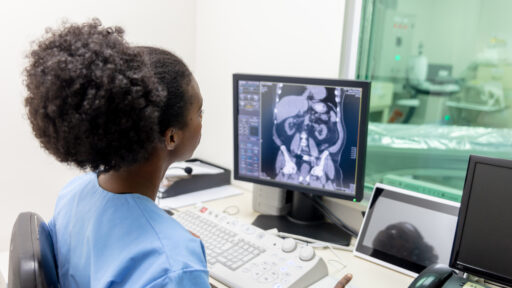A gallium scan detects and localizes inflammatory and infectious processes such as fever of unknown origin, abscesses, vertebral osteomyelitis, sarcoidosis, and PCP.
How It Works:
- Injection of Gallium-67: The procedure begins with the intravenous injection of the gallium-67 radiotracer. After injection, the gallium-67 circulates throughout the body and accumulates in areas of infection, inflammation, or cancer.
- Waiting Period: There is usually a waiting period of 24 to 72 hours after the injection before the images are taken. This allows the gallium-67 time to accumulate in the target tissues.
- Imaging: The patient returns for imaging after the waiting period. A gamma camera is used to take images of the body, capturing the distribution of the gallium-67. Areas where the gallium-67 has accumulated will show up as “hot spots” on the images.
- Image Analysis: The images are analyzed by a radiologist or nuclear medicine specialist to determine the location and intensity of the gallium uptake. These “hot spots” can indicate the presence of infection, inflammation, or tumors.

